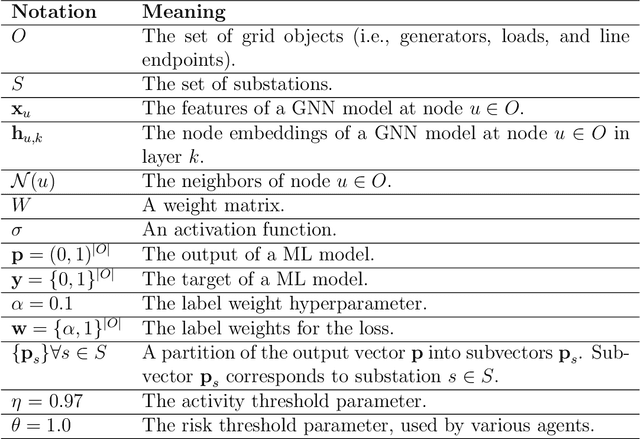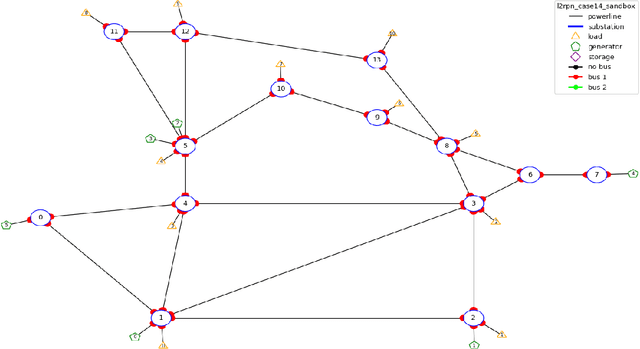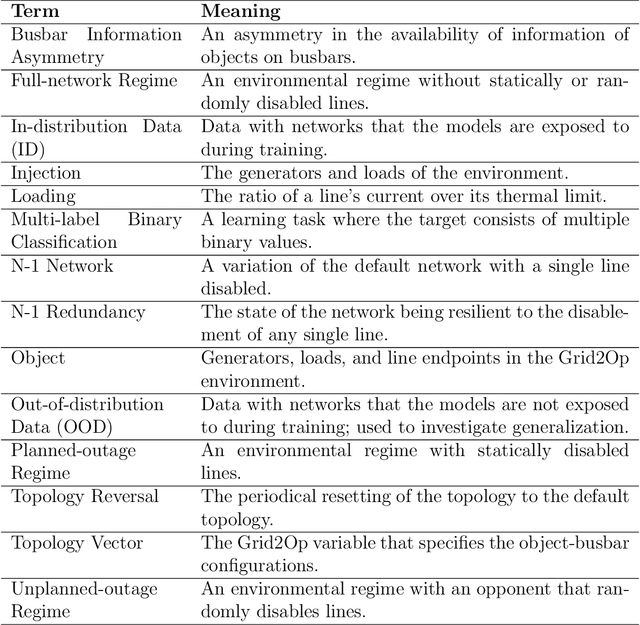Matthijs de Jong
Learning Topology Actions for Power Grid Control: A Graph-Based Soft-Label Imitation Learning Approach
Mar 19, 2025Abstract:The rising proportion of renewable energy in the electricity mix introduces significant operational challenges for power grid operators. Effective power grid management demands adaptive decision-making strategies capable of handling dynamic conditions. With the increase in complexity, more and more Deep Learning (DL) approaches have been proposed to find suitable grid topologies for congestion management. In this work, we contribute to this research by introducing a novel Imitation Learning (IL) approach that leverages soft labels derived from simulated topological action outcomes, thereby capturing multiple viable actions per state. Unlike traditional IL methods that rely on hard labels to enforce a single optimal action, our method constructs soft labels over actions, by leveraging effective actions that prove suitable in resolving grid congestion. To further enhance decision-making, we integrate Graph Neural Networks (GNNs) to encode the structural properties of power grids, ensuring that the topology-aware representations contribute to better agent performance. Our approach significantly outperforms state-of-the-art baselines, all of which use only topological actions, as well as feedforward and GNN-based architectures with hard labels. Most notably, it achieves a 17% better performance compared to the greedy expert agent from which the imitation targets were derived.
Generalizable Graph Neural Networks for Robust Power Grid Topology Control
Jan 13, 2025



Abstract:The energy transition necessitates new congestion management methods. One such method is controlling the grid topology with machine learning (ML). This approach has gained popularity following the Learning to Run a Power Network (L2RPN) competitions. Graph neural networks (GNNs) are a class of ML models that reflect graph structure in their computation, which makes them suitable for power grid modeling. Various GNN approaches for topology control have thus been proposed. We propose the first GNN model for grid topology control that uses only GNN layers. Additionally, we identify the busbar information asymmetry problem that the popular homogeneous graph representation suffers from, and propose a heterogeneous graph representation to resolve it. We train both homogeneous and heterogeneous GNNs and fully connected neural networks (FCNN) baselines on an imitation learning task. We evaluate the models according to their classification accuracy and grid operation ability. We find that the heterogeneous GNNs perform best on in-distribution networks, followed by the FCNNs, and lastly, the homogeneous GNNs. We also find that both GNN types generalize better to out-of-distribution networks than FCNNs.
Imitation Learning for Intra-Day Power Grid Operation through Topology Actions
Jul 29, 2024Abstract:Power grid operation is becoming increasingly complex due to the increase in generation of renewable energy. The recent series of Learning To Run a Power Network (L2RPN) competitions have encouraged the use of artificial agents to assist human dispatchers in operating power grids. In this paper we study the performance of imitation learning for day-ahead power grid operation through topology actions. In particular, we consider two rule-based expert agents: a greedy agent and a N-1 agent. While the latter is more computationally expensive since it takes N-1 safety considerations into account, it exhibits a much higher operational performance. We train a fully-connected neural network (FCNN) on expert state-action pairs and evaluate it in two ways. First, we find that classification accuracy is limited despite extensive hyperparameter tuning, due to class imbalance and class overlap. Second, as a power system agent, the FCNN performs only slightly worse than expert agents. Furthermore, hybrid agents, which incorporate minimal additional simulations, match expert agents' performance with significantly lower computational cost. Consequently, imitation learning shows promise for developing fast, high-performing power grid agents, motivating its further exploration in future L2RPN studies.
 Add to Chrome
Add to Chrome Add to Firefox
Add to Firefox Add to Edge
Add to Edge